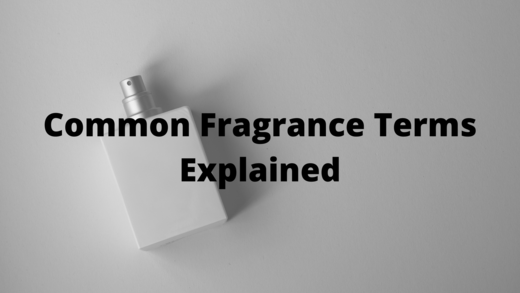You've probably heard these terms...
And maybe thought to yourself...
"Do you mind speaking English?"
Alas, have no fear, 1000 Scents is here...
... to explain common fragrance terms.
We'll start with a very common term that, while seemingly pretentious, captures a very common phenomenon...
1. Sillage
Pronounced like your yawning - "see-yazh" - sillage is the reason you wear fragrance in the first place.
Simply put: it's the trail of scent left behind you.
Now, unlike if you're wearing body spray, properly applied cologne should be alluring, strong but subtle (if that makes any sense).
After you walk by a crowd of people, they'll catch the sillage from your cologne. And ideally, they shouldn't be gagging and coughing, but instead will be pleasantly surprised, and may even want to continue walking behind you. Or they may even give you a tap on the shoulder and ask what fragrance you're wearing.
2. Gourmand
A gourmand is a fragrance that contains "food-heavy" scents, like cinnamon, vanilla, chocolate, raspberry, and so on.
Gourmands in particular respond differently to your body chemistry, so these types of scents tend to smell differently on different people.
While the goal isn't to smell like your mother's kitchen, these scents are quite pleasant, which is why many fragrances contain these notes.
Speaking of notes...
3. Notes
We've covered the various types of notes, ie., top, middle, and base in a previous blog post.
However, put simply, notes are the various "ingredients" that make up a fragrance. Notes are the scents that you smell.
4. Drydown
After the top and middle notes of a fragrance finish, the drydown is the concluding phase of a fragrance where the base notes come out.
The drydown is the longest part of a fragrance's duration and is unique to individuals. This is the reason why you shouldn't just base your preference for a fragrance on the initial top notes, as the drydown is specific to each person.
5. Aldehydes
Aldehydes are naturally occurring compounds, often found in flowers, such as roses. Aldehydes found in perfumes/colognes are synthetic. Therefore, they tend to smell slightly different from their natural counterparts.
While it's difficult to describe how they smell different, synethic aldehydes have a fresher spark to the scent.
6. Fougère
These types of fragrances are defined by their earthy, nature notes. A cologne with pine, cedar, lavender, or other similar scents are considered to be a fougère.
7. Concentration
Fragrances are labelled based on their concentration as EDP, EDT, Parfum, and so on. These labels categorize fragrances based on their perfume oils to alcohol ratio. You can find a full breakdown of the various fragrance concentrations in another blog post here.
Concentration will affect the duration and strength of a particular scent. A highly concentrated Parfum fragrance will tend to have a stronger smell and have a longer duration, and therefore require fewer, less frequent sprays to maintain its strength. Hence, Parfum fragrances tend to be more expensive.
If you want to find a scent that's right for you, without breaking the bank and spending hundreds of $$$ on fragrances, you can get your hands on an 8 ml bottle (monthly supply) of your choice today with a 1000 Scents™ Premium Cologne Subscription.
Use your newly gained knowledge about sillage, concentration, gourmands, and drydowns to find a fragrance that's right for you (or just switch things up!).
You can get in on the inside by clicking here.
Until next time,
Smell great, be great.
And have a nice day.

